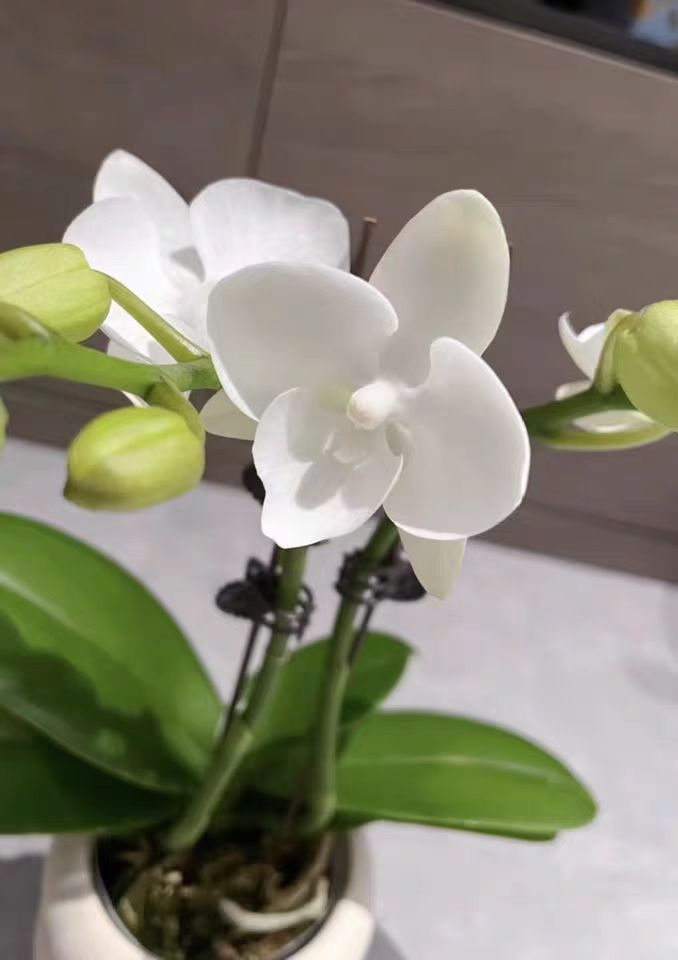During the cultivation of Phalaenopsis, temperature and humidity are key factors affecting its growth state. Many flower enthusiasts have encountered the situation of flower buds dropping. So, will high temperatures cause the flower buds of Phalaenopsis to drop? When the temperature and humidity are too high, how should we adjust them?
Phalaenopsis is native to tropical and subtropical rainforest areas. Although it has a certain tolerance to heat, there is a limit to its tolerance of high-temperature environments. Generally speaking, when the ambient temperature remains above 30°C, especially when it exceeds 32°C, the physiological activities of Phalaenopsis will be significantly affected, which may lead to the dropping of flower buds.
High temperatures will accelerate the metabolic rate of Phalaenopsis. The respiration and transpiration of the plant will intensify, and water will be consumed too quickly. When the water absorbed by the roots cannot meet the rapid consumption needs of the plant, the flower buds will wither and drop due to water shortage. At the same time, high temperatures will also disrupt the hormonal balance within the plant, affecting the differentiation of flower buds and the normal development of flower buds. The originally healthy flower buds may stop developing due to the unsuitable growth environment and eventually fall off. In addition, a high-temperature environment is often accompanied by low humidity, and overly dry air is not conducive to the growth of flower buds, easily causing the tips of the flower buds to dry out and drop.
When the ambient temperature is too high, the environment can first be improved through physical cooling methods. Use a shade net to block the sunlight, reducing the intensity of light received by the plant and avoiding the local temperature rise caused by direct sunlight. Place a fan indoors to promote air circulation and speed up heat dissipation, simulating a natural ventilation environment. You can also place a basin filled with cold water around the plant. The evaporation of water can take away heat and achieve a cooling effect.
If it is cultivated indoors, you can use an air conditioner to adjust the temperature and control it within the suitable range of 18 - 28°C. However, it should be noted that the air outlet of the air conditioner should not directly face the Phalaenopsis to prevent damage to the plant caused by sudden temperature changes.
Excessively high humidity is likely to breed bacteria and fungi, trigger diseases, and affect the health of Phalaenopsis. At this time, strengthening ventilation is the key. Open the windows or use an exhaust fan to promote the exchange of indoor and outdoor air and reduce the air humidity. At the same time, reduce the frequency and amount of watering to avoid the soil from being too wet. When watering, follow the principle of "watering when the soil surface is dry".
If the indoor humidity remains high for a long time, a dehumidifier can be used to reduce the humidity. In addition, place a layer of ceramsite or crushed stones at the bottom of the flower pot to form a drainage layer, which is helpful for the discharge of excess water, avoids root rot caused by water accumulation, and indirectly reduces the humidity environment around the plant.
Understanding the temperature and humidity requirements of Phalaenopsis and mastering the adjustment methods for dealing with excessively high temperatures and humidity are important guarantees for cultivating Phalaenopsis well and avoiding the dropping of flower buds. In daily cultivation, pay more attention to environmental changes and care for it carefully, and the Phalaenopsis will bloom in a suitable environment.
Will high temperatures cause the flower buds of Phalaenopsis to drop?

Share with
Tagged in :




Leave a Reply